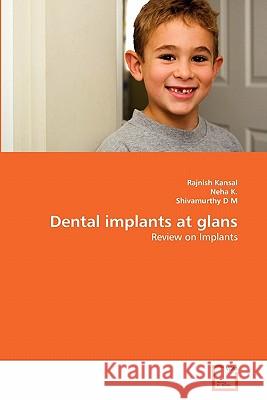Dental implants at glans » książka
Dental implants at glans
ISBN-13: 9783639345612 / Angielski / Miękka / 2011 / 64 str.
Dental implants are the fastest developing technology in practice of dentistry today. The present surge in the use of implants was initiated in 1952 by Branemark who conducted extensive experimental and clinical studies. Rehabilitation of partially or completely edentulous patients relies on safe and lasting retention of prosthesis that provides adequate anatomical and functional restitution. All facets of the dental profession are interested in this new treatment style; general dentists, periodontist, oral surgeons, and prosthodontists being the major groups of practitioners involved in this treatment mode. Dental implants now provide a clear and viable treatment alternative to removable or fixed partial dentures. Dental implants are devices, usually alloplastic in nature that are surgically inserted into or onto the jawbone, which support a single prosthetic tooth and serve either as abutments or as cosmetic replacements for missing teeth.
Dental implants are the fastest developing technology in practice of dentistry today. The present surge in the use of implants was initiated in 1952 by Branemark who conducted extensive experimental and clinical studies. Rehabilitation of partially or completely edentulous patients relies on safe and lasting retention of prosthesis that provides adequate anatomical and functional restitution. All facets of the dental profession are interested in this new treatment style; general dentists, periodontist, oral surgeons, and prosthodontists being the major groups of practitioners involved in this treatment mode. Dental implants now provide a clear and viable treatment alternative to removable or fixed partial dentures. Dental implants are devices, usually alloplastic in nature that are surgically inserted into or onto the jawbone, which support a single prosthetic tooth and serve either as abutments or as cosmetic replacements for missing teeth.











